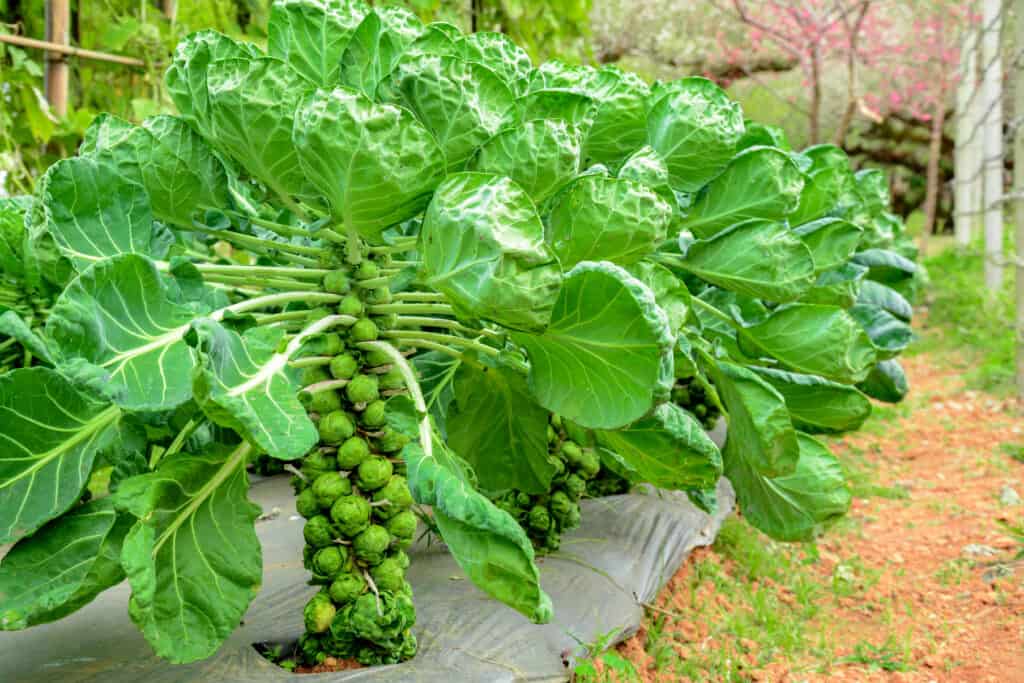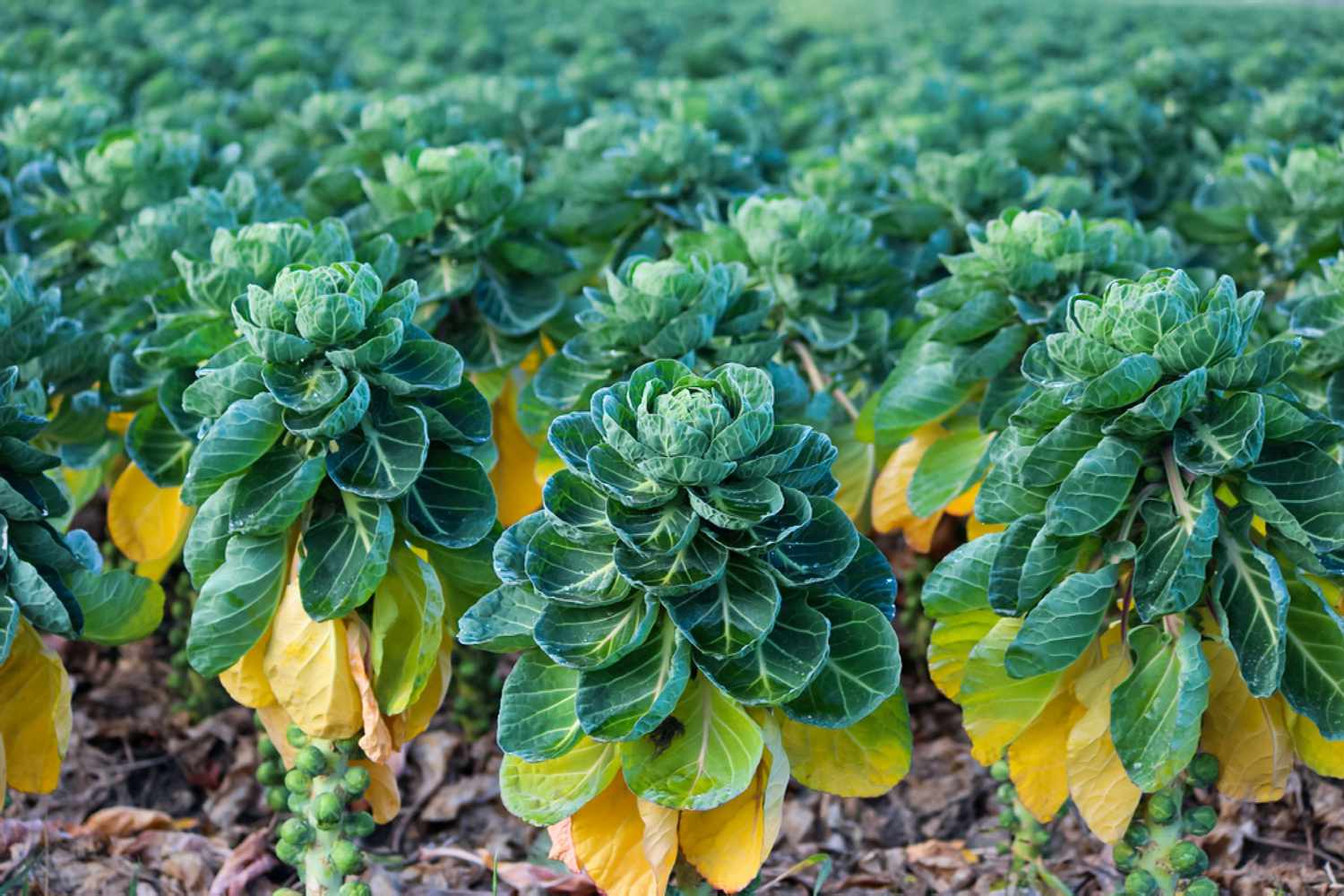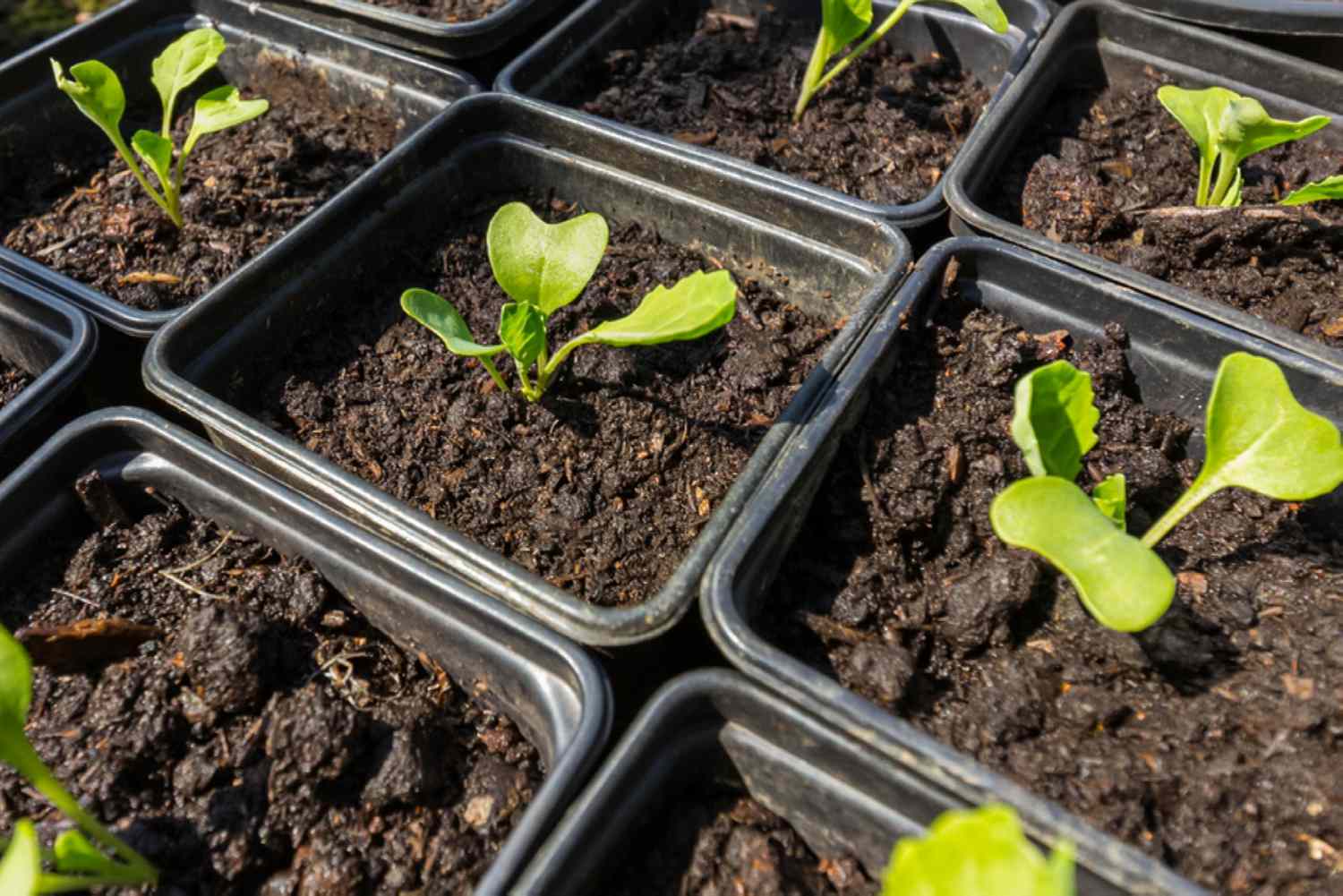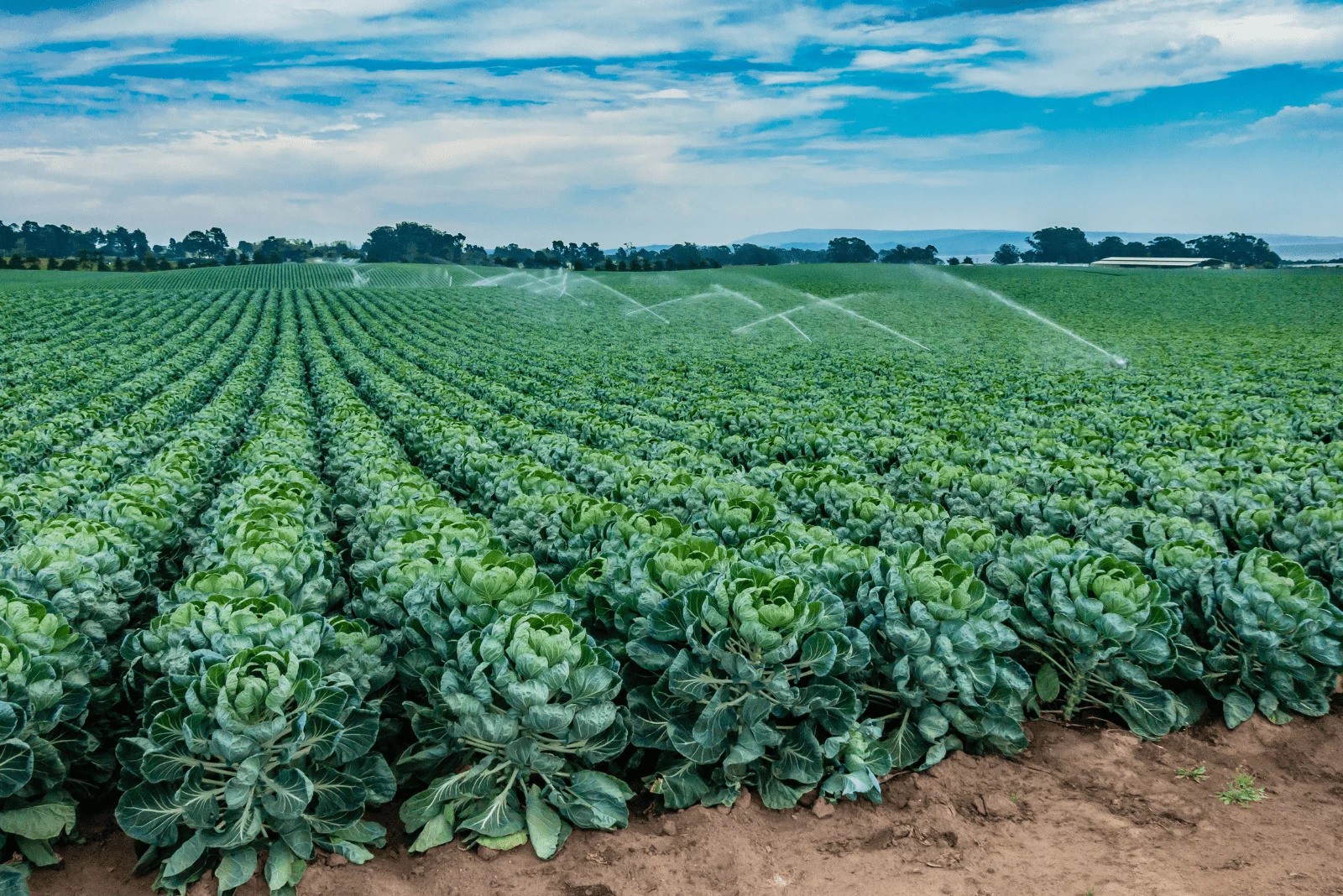Brussels Sprouts Growing Stages - From Seed To Harvest
Know more about brussels sprouts growing stages, from seed starting to harvesting and storing. Learn to select the right variety, seed starting, transplanting seedlings, caring for plants, harvesting, and storing.
Author:Buttskin FamilyReviewer:Caden SteelheartFeb 23, 20241.1K Shares68.9K Views
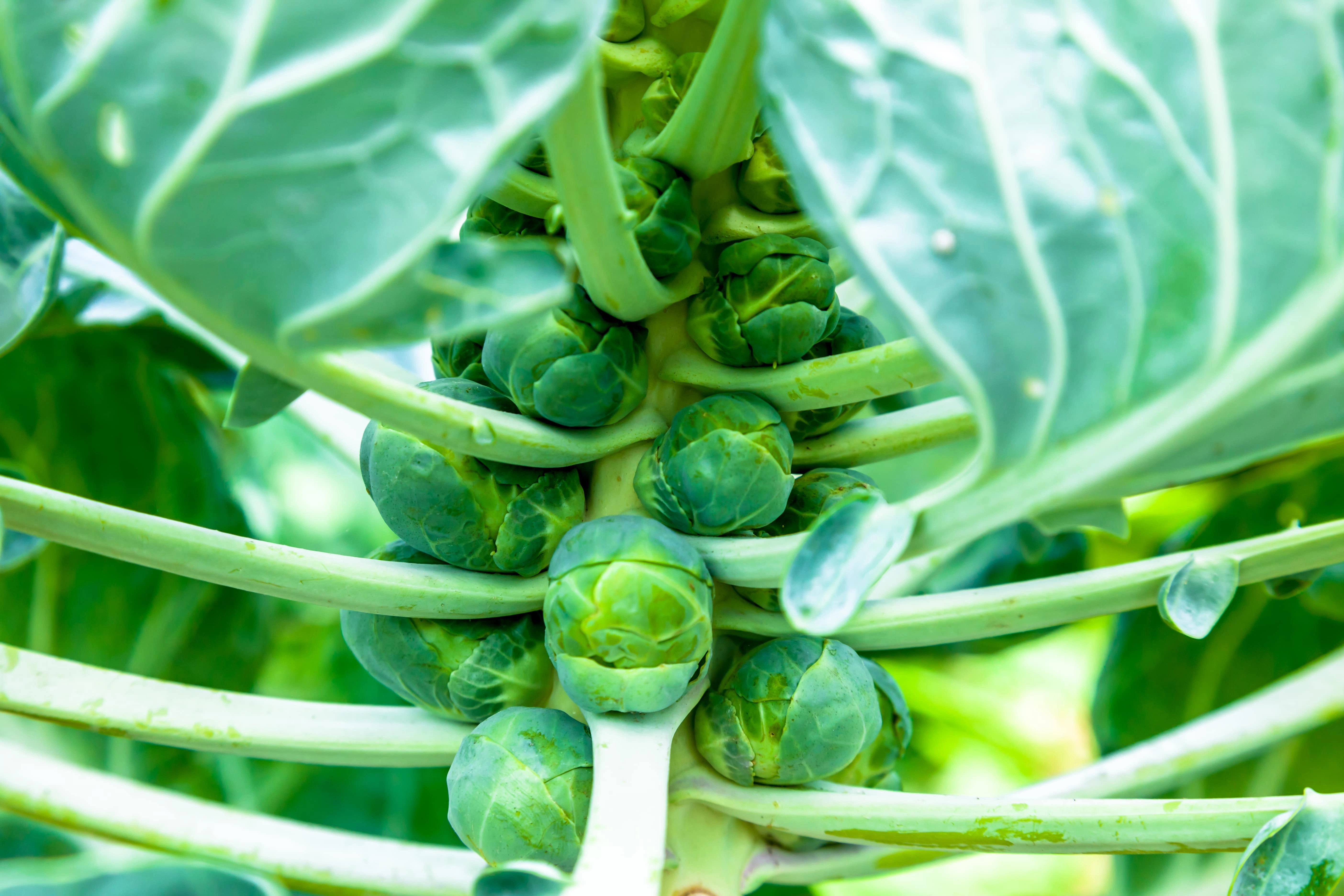
Brussels sprouts are a popular addition to many gardens because of their powerful flavour and small, cabbage-like look. However, in order to properly grow these nutrient-dense gems, one must comprehend the complex process from seed to harvest. Starting the brussels sprouts growing stagesis like starting a garden adventure.
It's full of suspense, surprises, and, at the end, the satisfaction of seeing the fruits of your labor. Every step of the Brussels sprouts' life, from the modest beginnings of tiny seeds to the abundant yields of mature plants, presents different chances and problems.
We will dig into the intriguing world of Brussels sprouts cultivation in this thorough book, carefully and perceptively examining every facet of their growth. Come along as we reveal the techniques for raising healthy Brussels sprouts plants, from seed to harvest, and explore how you may grow an abundance of flavorful, fresh produce on your own.
What Are Brussels Sprouts?
Let's take a moment to explain what Brussels sprouts are and why they are worthwhile to cultivate before moving on to the growth stages. Brussels sprouts, or Brassica oleracea, as they are officially named, are a beloved vegetable that belongs to the cabbage family and are grown along the stem of the plant. These veggies are a great complement to any diet because they are high in vitamins, minerals, and antioxidants.
Brussel Sprout Plant Stages
Achieving efficient cultivation and harvesting of Brussels sprouts requires an understanding of the many developmental stages of the plant. Every stage, from seed germination to maturity, presents different opportunities and problems for gardeners. This guide will provide you the knowledge and abilities you need to raise healthy, fruitful Brussels sprout plants from seed to harvest, regardless of your level of gardening experience.
Selecting The Right Variety
Choosing the appropriate type for your yard is the first step in growing Brussels sprouts. With so many cultivars on the market, it's critical to select one that will work best for your environment, soil, and intended harvest date. 'Long Island Improved,' 'Jade Cross,' and 'Falstaff' are common varieties, each with distinct traits and growth patterns.
Consider your local climate as well. While certain types of Brussels sprouts do better in warmer climes, they generally grow well in cooler weather. Depending on how long your growing season is, select an early, mid, or late-season variety.
Next, consider the area that is available in your garden. Certain types yield compact plants, which are good for pots or smaller areas. Texture and flavor are also important factors. Try a variety by tasting several to see which one best suits your tastes.
Finally, search for cultivars that are resistant to common ailments like powdery mildew and clubroot. This will contribute to a robust and bountiful crop. You can choose the ideal Brussels sprout variety for your garden and savor delectable produce grown at home by taking these considerations into account.
Seed Starting
A vital step in the process of growing Brussels sprouts is starting seeds. Gardeners can produce healthy and thriving plants before moving them outside by starting the growing process indoors. Gather the necessary materials before beginning this project, including seed trays or containers, seeds, seed starting mix, and a spray bottle or watering can.
Fill the trays or containers with seed starting mix, making sure to leave a small opening at the top for watering. After everything is set up, gently sow the seeds, following the directions on the seed packet. Make sure to evenly space the seeds, then lightly cover them with dirt.
Watering the seeds sparingly is crucial to ensuring that the soil stays consistently moist without becoming overly saturated. To promote ideal germination conditions, place the trays or pots in a warm, bright area, such as a windowsill or under grow lights. To avoid problems such as damping off disease, make sure there is enough ventilation and that the moisture levels are regularly monitored.
As the seeds germinate and the seedlings appear, give them first priority and make sure they have enough light and ventilation. The seedlings can be moved into bigger containers or straight into the garden soil once they have sprouted their first genuine leaves. Gardeners can lay the groundwork for a plentiful crop of Brussels sprouts in the upcoming seasons by carefully adhering to these seed-starting instructions.
Transplanting Seedlings
A crucial phase in the development of Brussels sprouts is the transplantation of seedlings, which signifies the change from indoor to outdoor farming. The young plants must be carefully moved from their original containers to their allotted garden beds or outdoor containers throughout this procedure. It is crucial to prepare the planting site by making sure the soil is weed-free, well-drained, and rich in organic matter before transplanting.
Pick a spot that gets enough sunlight and has enough room for the adult Brussels sprout plants to grow. Gently take the seedlings from their containers, taking care not to severely disrupt the roots, in order to transplant them. Tease the roots apart gently if the seedlings are confined by their roots to promote good growth.
Create holes in the prepared soil that are just a little bit bigger than the seedlings' root balls. As you plant each seedling in its designated hole, make sure the soil level is the same as the height of the seedling's stem. Press the earth firmly around the seedling's base to provide stability and healthy root-soil contact.
Give the seedlings plenty of water after transplanting to aid in their acclimatization to their new surroundings. Regularly check the moisture content and add more water as needed, particularly in the dry months. It's also a good idea to use row covers or provide temporary shade to shield the recently transplanted seedlings from inclement weather, such as high winds or intense heat.
Early Growth Stage
In their early growing stage, Brussels sprouts expand quickly as they become acclimated to their new surroundings. This stage lasts for a few weeks after transplanting, during which the seedlings concentrate on developing robust root systems and stout stems while acclimating to their new environment. Providing ideal growing conditions is essential at this point to ensure healthy growth.
Full sun and well-drained, fertile soil with a pH of 6.0 to 7.5 are ideal growing conditions for Brussels sprouts. Especially in dry spells and hot weather, regular irrigation is necessary to maintain an even moisture content in the soil. Applying organic compost or balanced fertilizer around the base of the plants on a biweekly basis might promote strong development.
This will supply the necessary nutrients to encourage the growth of robust foliage and the generation of dense, delicious sprouts. When Brussels sprouts are still in the early stages of growth, keep a lookout for common pests and illnesses like clubroot, cabbage loopers, and aphids. Infestations can be avoided, and healthy plant growth can be ensured with routine examination and timely treatment.
As the plants grow, keep an eye on their development and offer assistance as required to keep them from toppling in windy circumstances. Gardeners can lay the groundwork for an abundant harvest later in the season by providing care for Brussels sprouts throughout their early growth stage.
Mid-Season Care
The plants go through major development throughout the mid-season period of Brussels sprout growth as they go from the early growth phase to the sprout-producing stage. To achieve optimal growth and yield, this crucial stage calls for cautious attention and the right supplies. A crucial component of mid-season maintenance is giving the plants enough water and nutrients to meet their growing needs.
Due to their extensive root systems, Brussels sprouts require regular, thorough irrigation to keep the soil continuously moist. Mulching the area surrounding the base of the plants can promote healthy development through weed suppression and soil moisture retention. Fertilizing the plants with an organic compost or balanced fertilizer can supply vital nutrients needed for healthy sprout development and rapid growth.
Apply fertilizer as directed on the package, being careful not to over-fertilize as this might cause excessive growth of foliage at the expense of the development of sprouts. Brussels sprout plants may need extra support to keep from bending or toppling as they become taller and heavier as sprouts produce. Plants can be stabilized and protected from wind and rain damage by being staked or caged.
It's also critical to keep an eye out for symptoms of pests and diseases, including powdery mildew, cabbage worms, and aphids, on the plants throughout the mid-season period. Plant damage can be reduced and infestations can be stopped from spreading with early discovery and treatment. Later in the season, a satisfactory harvest of Brussels sprouts can be ensured by regularly checking the plants and taking quick care of any problems.
Harvesting Brussels Sprouts
The thrilling and satisfying process of harvesting Brussels sprouts is the result of months of patience and care. It's crucial to understand when and how to pick these mouthwatering veggies in order to guarantee that their flavor and quality are at their best. When Brussels sprouts are tightly packed, firm, and have a diameter of one to two inches, it's time to harvest them.
If you harvest your sprouts too soon, they can be smaller, and if you wait too long, they might be too ripe and bitter. Brussels sprouts are easy to harvest; just grab the base of the sprout and gently twist it until it breaks off from the main stem. As an alternative, you can trim the sprouts from the stem with a sharp knife, being careful not to cut into the nearby foliage.
As the lower sprouts mature, start picking from the bottom of the plant and work your way up. Allow the larger, smaller sprouts to grow and develop so they can be harvested later. To increase airflow and lower the risk of illness, remove any leftover yellowing or spent leaves from the plant after harvesting.
The gathered Brussels sprouts can be kept fresh for several weeks in the refrigerator. Consider cooking the newly harvested Brussels sprouts shortly after picking for optimal flavor and texture. These nutrient-dense veggies are a tasty side dish that may be sautéed, steamed, or roasted.
Storing And Enjoying
An enjoyable aspect of gardening is preserving and consuming Brussels sprouts, which lets you enjoy your produce well beyond the growing season. It's possible to maintain the flavor and freshness of these nutrient-dense veggies for several weeks by using proper preservation strategies. Brussels sprouts must be stored properly to preserve their quality after harvest.
Using a fresh cloth or paper towel, gently dry the sprouts to remove any remaining moisture. After that, move the sprouts to an airtight container or perforated plastic bag to help control humidity levels and keep them from being too wet or too dry. The Brussels sprouts can be kept fresh for up to two weeks in the crisper drawer of your refrigerator.
To prevent them from spoiling more rapidly, keep them away from fruits that release ethylene, such as bananas and apples. There are so many delectable ways to prepare Brussels sprouts when you're ready to eat them. You may also try roasting them with garlic, olive oil, and your preferred herbs for a tasty and crunchy side dish.
As an alternative, you can steam or sauté them with some lemon juice and Parmesan cheese for a quick and filling dinner. Brussels sprouts are a versatile addition to salads, stir-fries, and pasta dishes since they go well with a wide range of other ingredients, such as bacon, cranberries, and nuts. Try varying the flavor combinations to find your favorite way to eat these nutrient-dense veggies.
Brussel Sprouts Growing Stages
FAQ - Brussels Sprouts Growing Stages
How Much Time Do Brussels Sprouts Take To Grow?
When transplanted, Brussels sprouts normally require 90–100 days to reach maturity.
Is It Possible To Cultivate Brussels Sprouts In Containers?
Brussels sprouts can be grown in raised beds or large containers as long as they have enough room and sunlight.
Which Season Is Ideal For Planting Brussels Sprouts?
The ideal times to grow Brussels sprouts are in the middle of the summer for a winter crop or late spring for an autumn harvest.
Are Brussels Sprouts Shade-tolerant?
Indeed, Brussels sprouts need full daylight; they should get at least 6 to 8 hours of sunlight each day.
When Are Brussels Sprouts Ready To Be Harvested?
When Brussels sprouts are compact, firm, and have a diameter of one to two inches, they are ready to be harvested.
Conclusion
Understanding brussels sprouts growing stages is essential to a good and abundant harvest of these delicious and nourishing veggies. You will have all you need to grow healthy, productive Brussels sprout plants from seed to harvest if you adhere to the thorough instructions provided in this complete guide. Every step of growing Brussels sprouts is important, from choosing the best type to raising seedlings, providing mid-season care, and finally harvesting and savoring the results of your labor.
You can turn little seeds into sturdy plants full with mouthwatering sprouts if you put in the necessary time, effort, and attention to detail. Therefore, embrace the difficulties and victories of every growth stage and let the process of growing Brussels sprouts to be a gratifying and meaningful one.

Buttskin Family
Author
The Buttskins are a crazy author family who love writing, laughter, and eating an unhealthy amount of junk food. Mom Rockita started scribbling stories as soon as she could hold a pen, and Dad John didn't realize authoring children's books was a real job until after they were married.
Their kids have embraced storytelling at an early age. Little Lucy, age 5, dictates her colorful tales about dragons and princesses to her parents. Her 8-year old brother Jake collects scraps of paper to diagram his latest imaginary adventure involving ninjas and dinosaurs.

Caden Steelheart
Reviewer
Caden Steelheart, an enigmatic author, weaves tales that immerse readers in the depths of sin city's underbelly. With his words as a weapon, he crafts literary masterpieces that reflect the dark and dangerous spirit of the city. Caden's writing captures the gritty essence of sin city, delving into the intricacies of its characters and the moral complexities that define their existence.
Born amidst the shadows, Caden draws inspiration from the relentless chaos and unforgiving nature of the city. His words carry the weight of experience, creating a vivid and haunting portrayal of sin city's undercurrents. Through his stories, he explores the blurred lines between right and wrong, exploring themes of power, deception, and redemption.
Caden Steelheart's literary prowess has made him a name whispered in literary circles, captivating readers with his ability to immerse them in sin city's intricately woven tapestry. With each written word, he invites readers to journey into the darker realms of the human experience, offering them a glimpse into the secrets and sins that shape the city's inhabitants. Caden Steelheart, a master of capturing the essence of sin city through his writing, continues to captivate audiences with his haunting and evocative narratives.
Latest Articles
Popular Articles
